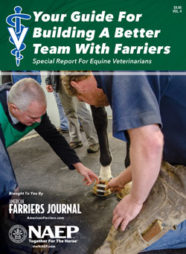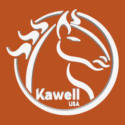Bill Bennett (Lake Arrowhead, Calif.)
Bodie and I had worked for years with a cutting horse trainer in California, getting Bodie started, trained, and working cattle. Bodie had exhibited a “spooking and bolting” problem for years. For the first two years I had him, he spooked and bolted with me every time I threw a leg over his back. He dumped me in the dirt more than once. But other than that, he was sweet and kind and had a big heart, and I was devoted to him, even after he put me in the hospital.
Through our years together, Bodie and I learned how to do everything. We learned to longe, even though we both hated it. We eventually learned how to do rollbacks on the longe line. We learned our gaits, leads, two tracking, side passing, and backing up. We learned our stops, rollbacks, and how to work the flag. We learned how to drive, track, and turn cattle. We started showing and were winning blue ribbons in amateur reining and ranch horse classes.
Bodie and I toughed it out for six years, fighting through the spooking issues, learning to cut cattle, and use our higher-level skills. When Bodie started showing lameness, things began to go sour. My beloved horse Bodie began suffering recurring lameness that no one could really diagnose. At first, we thought it was his shoulder, and then his back. Then, we started looking at his hind.
Bodie’s injury was a combination of years of strenuous training, combined with years of inappropriate shoeing and a Mom who just didn’t know enough. I finally left my cutting teacher. I took some time to go lick my wounds and to get to know my horse better. I took a year just to focus on my relationship with Bodie and to try to figure out what was causing his lameness. I found my way to a trainer named Shirin Amier, who was well known in my area as a top-notch dressage trainer and problem solver. And who had studied with horseman Buck Brannaman for many years.

Bodie and I began learning dressage exercises to fine tune our basic skills and give him something to do that wasn’t so physically demanding. Then one day, it happened. I asked for the left lead canter, and Bodie squealed and bolted. I circled him and brought him back down, and my new teacher Shirin said to me “Denise, that was not a spook. That was a pain response!” Nobody had ever figured that out before.
Shirin and I loaded Bodie up on her trailer and she drove us to Alamo Pintado Equine Hospital in Santa Ynez. Bodie met with a team of doctors led by Dr. Mark Rick. Dr. Rick did X-rays of Bodie’s legs and feet and found that he was suffering from severely crushed heels on both hind feet and a negative palmar angle on the left hind. Dr. Rick also discovered that the long pastern bone in Bodie’s left hind leg was slightly concave and twisted to the outside, so that it predisposed him to turning out his foot and dropping the heel downward. What this meant was that he had a conformational defect in his leg that was exacerbating the problem in his left hind foot.
So for all these years, the little horse with the big heart had been trying his best, doing everything we asked of him. And he had been in pain the whole time. And we didn’t know. Dr. Rick made some suggestions about appropriate shoeing strategies and hand walking and time off and gradual healing. He said, “This is going to take a long time. Good luck with that.” We got back to SoCal and I touched base with our regular vet to fill him in on what we discovered at Alamo. He helped us refine our strategy about how we would move forward with making Bodie more comfortable. We knew that his career as a cutter and reiner were over.
The challenge at this point was finding the right farrier. Shirin and I talked for weeks about it, and I interviewed many farriers. None of them felt right. We needed someone patient and kind, who would agree to be in it for the long haul with us, and who wouldn’t give up. One day, Shirin said to me. “I know somebody. My friend Bill Bennett is shoeing again after a long time off. He might be perfect. I will give him your number.” Bill reached out to me with a phone call and a text, and we had an easy, fluid, educational discussion. We talked about long toe, low heel syndrome. We talked about “coon foot” and how it develops. We talked about strategy, and timing, and patience and persistence. We talked about how to take our time and go slow to achieve recovery. I knew that Bill Bennett was the right farrier to help Bodie.
Bill and I began a long journey together, both focused on getting the little horse better. Bill determined that Bodie had four very differently sized and differently shaped feet. He custom shaped the shoe for each foot every single time he shod him. He set Bodie up on a frog supported Myron McLane wedge pad to help alleviate the pain that ran through his foot and pastern and up his leg upon each impact with the ground. For two years, Bill and I worked together and executed our strategy. At the end of the two years, although he still needed the wedge pad, Bodie was finally traveling smoothly and soundly, and bucking and playing and running like hell. About a week after each shoeing, I would get a text message from Bill, asking “How’s my little buddy?” I forgot to mention… Bill is 6’4, and Bodie is 14.3.
Bill always checked up on us after our shoeings to see how Bodie was doing. “How was the ride?” he would ask. I’d tell him about our ride, and we’d share stories, even though my stories were likely pretty boring and close to the same every time. But the answer to the question about how Bodie was doing was always “He’s doing better” or “He’s doing great!” Gradually, I watched my little horse getting better and better under Bill’s expert care. Bill had better stories than me. But Bill was a humble and kind man. For him, it was always about the horse’s welfare.
Bill never talked too much about his years growing up on his dad’s horse ranch in Idaho, where he was responsible for starting the colts they raised and shoeing the horses. He rarely mentioned that he had been a high school roping champion. He rarely mentioned that he had earned a teaching degree and was a Professor of Business before he went back to shoeing. And he rarely mentioned that he had been a local rock star and that he had a collection of over fifteen rare electric guitars (but I kind of thought it was something like that because of his long hair and the KISS T-shirts he always wore…).
Bill was well known around Southern California because he was the emergency farrier at some of SoCal’s premier equestrian facilities: The LA Equestrian Center, Hansen Dam Equestrian Center, Rancho Murietta, Moorpark, and Del Mar. Most of Bill’s clients were high dollar hunters, jumpers, and dressage horses. But Bill Bennett treated my broken down little cow pony and me as if we were just as important as the fancy dressage horses he shod that were worth hundreds of thousands of dollars. Bill didn’t just take care of the horses. He provided emergency medical technician (EMT) services at the show grounds to help the riders when they got injured.
Bill never talked too much about this one horse he used to shoe back in Idaho. The horse’s name was Brentina and her rider was named Debbie MacDonald. They became Olympic Champions. They went to Sweden and won the World Cup in dressage. Bill was there with them. I’m sure Bill couldn’t tell you how many times he had been stepped on, stomped on, bit, head butted, or thrown. I would bet that over the years he had broken almost every bone in his body. I personally watched him shoe horses with a broken arm after one of his fancy dressage horses went ballistic in the wind. Bill Bennett just kept going, taking care of injured horses and hurt people.

Bill refused to use a hoof stand, saying he needed to be strong enough to stand on his own if he was going to shoe horses. “I shoe horses,” Bill said, “that’s what I do.” Bill never talked too much about his own physical challenges - the series of strokes that had left him nearly paralyzed, and that forced him to re-train himself to stand, and speak, and walk, and play guitar, and shoe horses again. He didn’t talk too much about his rare blood disease, and that he had to take medication so that he wouldn’t bleed to death from the cuts on his hands from hammering horseshoe nails into them, or from accidently cutting himself with his hoof knife, because he could not feel his fingers. Bill never talked too much about the fact that his wife and mother and sister were begging him to please stop shoeing horses, because they could see the immense pain he was in, and how exhausted he was from being on the road away from home for weeks at a time.
What Bill talked about was his family, how proud he was of his beautiful and talented wife, who had stood beside him and helped him through his troubles. He talked about how proud he was of his son, who was emerging to become a talented singer and actor, and a brave, handsome, strong young man. He talked about the beautiful home they had built in the forest, the garden they had grown, and the puppies they had raised. The last time Bill Bennett shod my horse; he pulled a hoof stand out of his truck and set it on the ground beside Bodie. “It’s time for me to retire,” he said. “If I have to use one of these, it is time to quit.”
I will miss you, my friend, my farrier Bill Bennett. Thank you. Enjoy your retirement in Idaho.
— Denise Daniel Kelly (Sylmar, Calif.)






